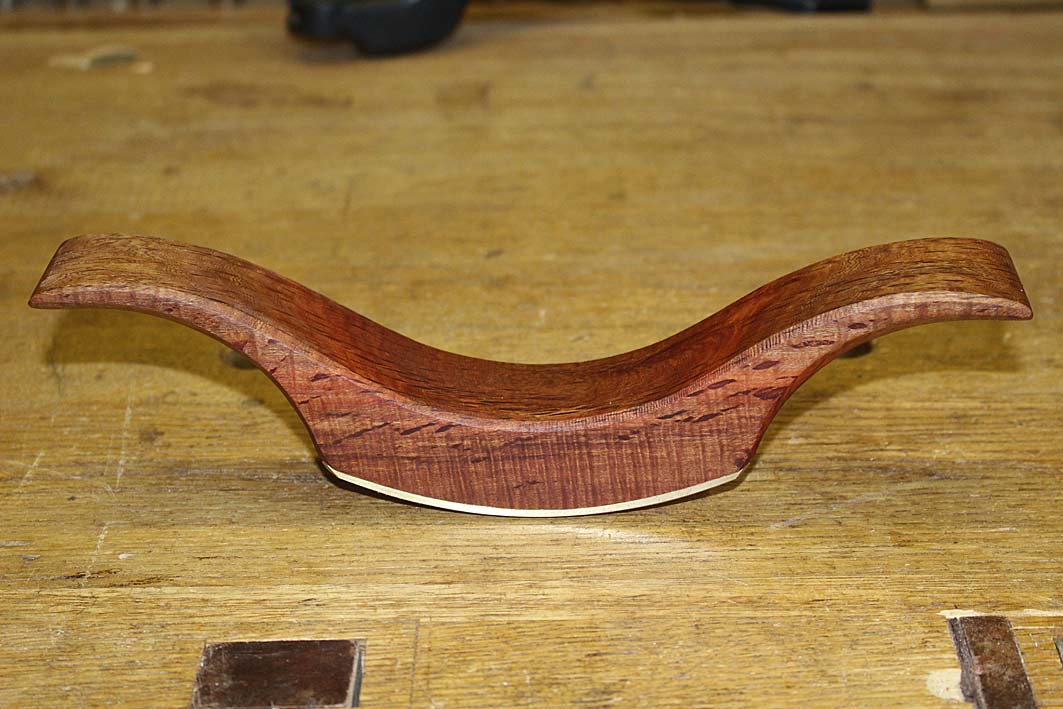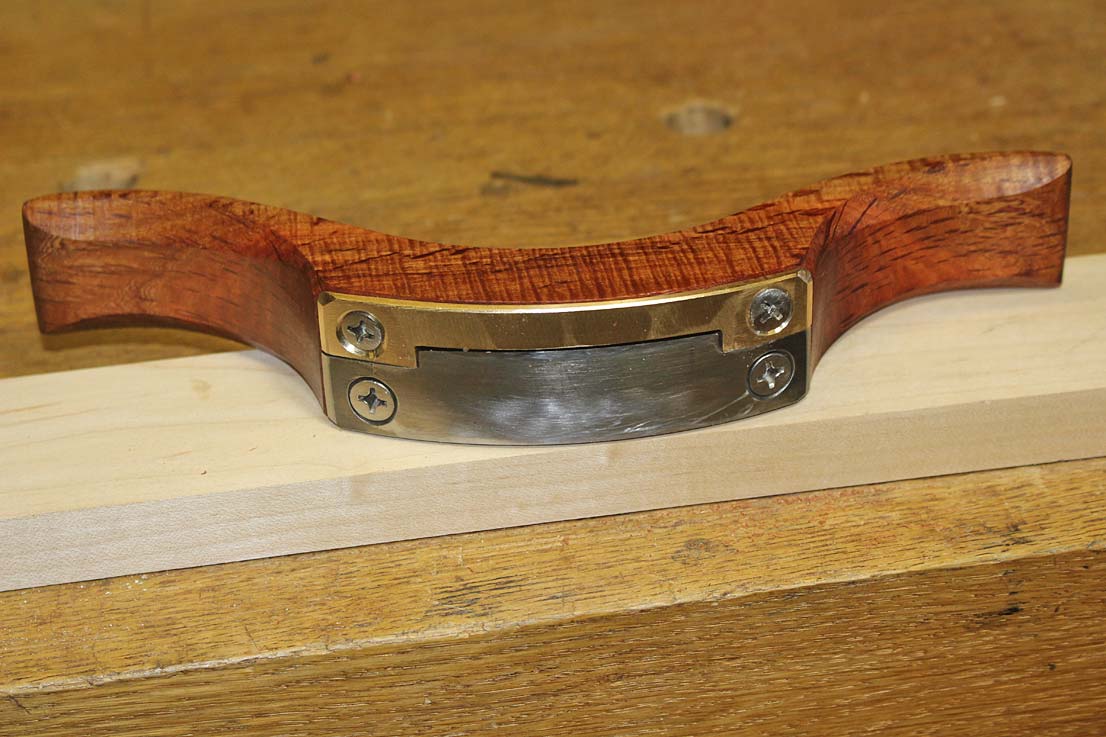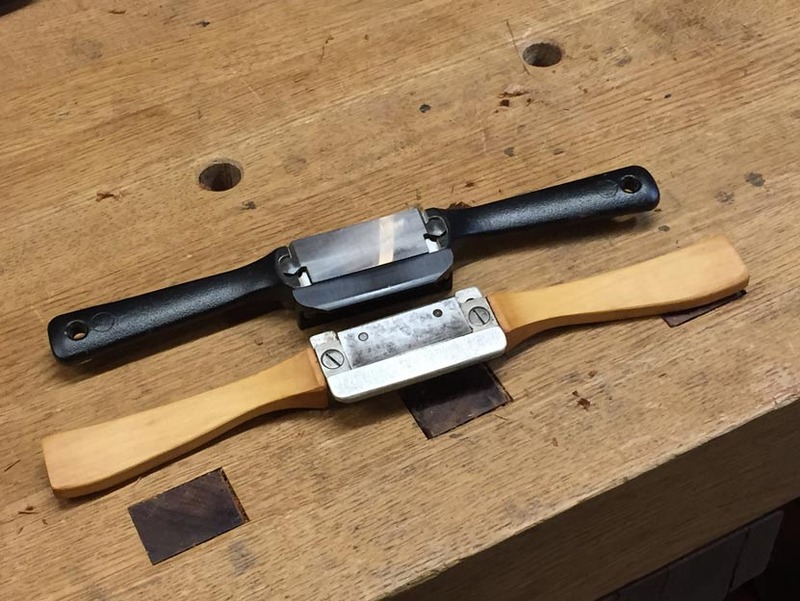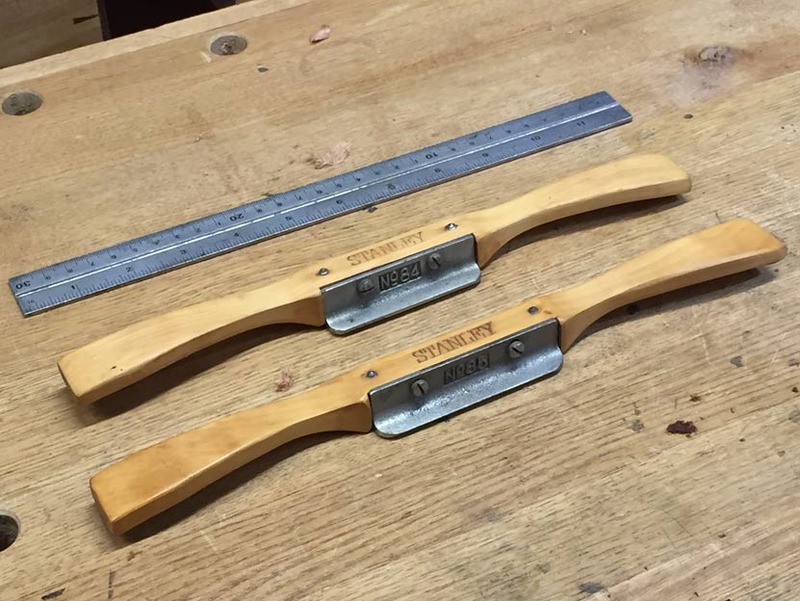Wooden spokeshave blades were made in a range of curvatures from almost flat to quite sharp curve, the latter ones being travishers, and rarer. Absolutely flat ones seem to be quite uncommon, except on modern wooden shaves.
Don't try to flatten it. You'll probably end up breaking the hardened steel blade.
You can sharpen them on the side of an oilstone, moving the blade both up and down the stone, and side-to-side. Aim for about a 25 degree bevel. Alternatively, Paul Sellers has a method using diamond paddles;
https://www.youtube.com/watch?v=zOJVXRQLUOI
Most wooden spokeshaves as found have quite a bit of wear on the mouth area, and it's not uncommon to repair them by letting in a piece of boxwood or brass. Don't set this parallel to the blade as you look at the tool, but allow for about a 5 to 10 degree angle, such that when the 'bed' is held tight to the work, the blade edge contacts, but the blade back slopes up at that angle to give clearance behind the cutting edge. That will make the tool more versatile, allowing you to control the cut to give heavy or light shavings by tilting into or out of cut. The slight curve of the blade helps too; middle of blade slightly heavier cut than ends, so you can take a sliver off the middle of a board edge if needed without cutting the edges.
A well-tuned wooden spokeshave is a more sensitive and versatile tool than a metal one, but wears much more quickly on the wood just ahead of the blade edge. Being low angle, they cut quite nicely on end grain when they're sharp, too.




































